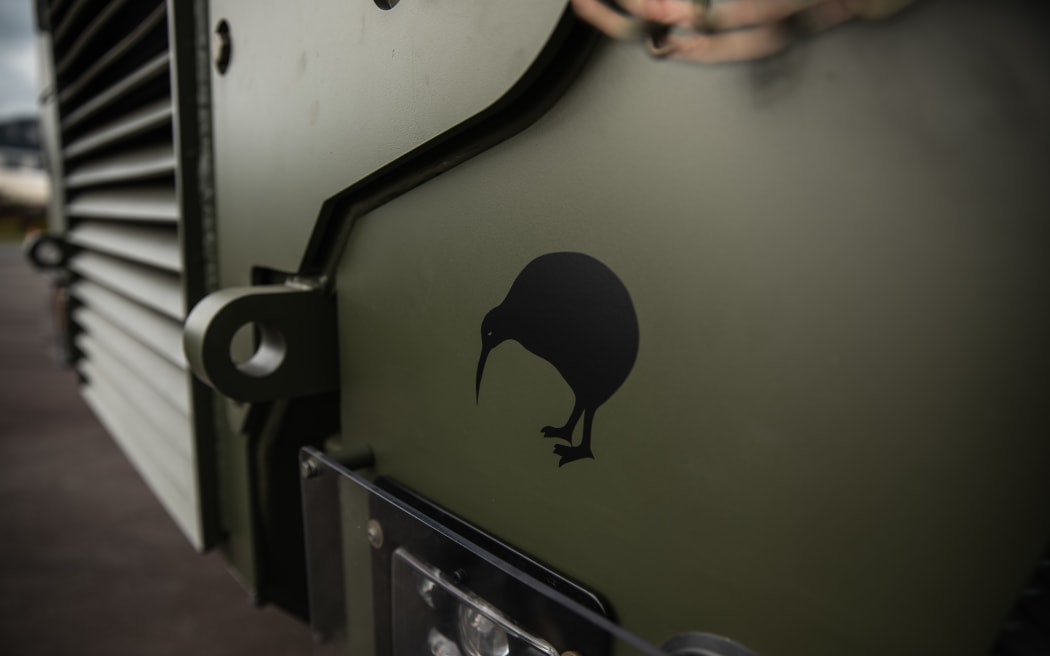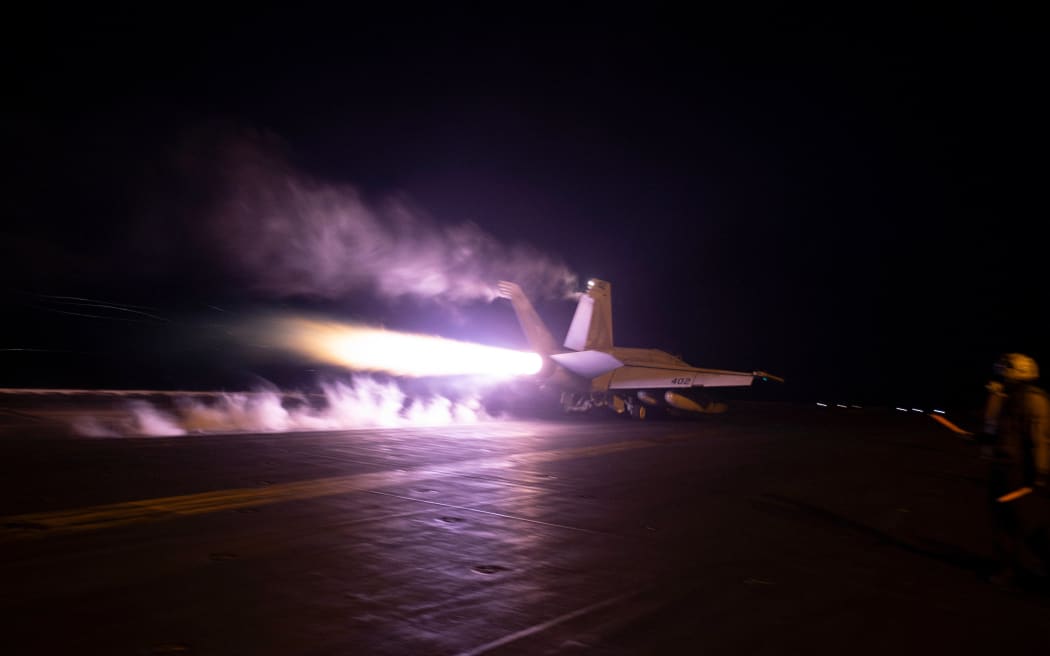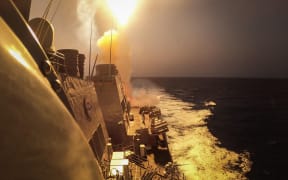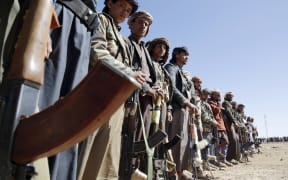
A team of six New Zealand Defence Force members is part of a coalition conducting strikes against the Houthis in Yemen and the Red Sea. Photo: RNZ / Samuel Rillstone
The government was warned Yemeni civilians could be killed in an operation in which New Zealand is involved to protect shipping in the Red Sea.
The coalition announced in January that the Defence Force would be sending a team of six to take part in the United States-led strikes against the Houthis and provide maritime security in the area.
In the three months since they deployed, members of the team have been involved in destroying Houthi helicopters, underground weapon storage facilities and air defence systems.
The government decided to send a team to join the group after the US chair of the Joint Chiefs of Staff, General Charles Q. Brown Jr, requested a meeting with New Zealand Chief of Defence Air Marshal Kevin Short on 6 January.
The US was seeking "military contributions to a new coalition" that would conduct "kinetic operations" - in other words, military action with lethal force against Houthi targets.
The government announced the decision to send a deployment two weeks later.
Documents released to RNZ showed officials asked Defence Minister Judith Collins to decide between two options, both six-month deployments.
The recommended option was 'a targeting team of up to six personnel' - including intelligence analysts, mission planners and a legal advisor - who would work alongside partners to enable the coalition to carry out strikes on Houthi targets.
It was seen as the better option because it would allow the Defence Force to provide a contribution of "notable operational value".
The inclusion of a legal advisor was seen as important to provide additional assurances that New Zealand's Rules of Engagement were not "transgressed" during planning of lethal force operations.
The second option was to only send two people in planning and targeting roles. A contribution of this size would have been seen as largely tokenistic and not as significant, the documents showed.
In an aide memoir to Collins, officials said contributing to a team was in New Zealand's interests but was not without risks.

US and UK forces, with support from Australia, Bahrain, Canada and the Netherlands, conduct strikes on a Houthi target in Yemen in January. New Zealand announced it would join the coalition the day after this photo was released. Photo: AFP / HANDOUT/ CENTCOM
Those specific risks were redacted from the documents.
A cabinet paper also talked of risks that were removed, but noted there was a threat to "personnel deployed to operational headquarters" in the region.
One of the documents also showed there was no way to rule out civilian casualties, but the consideration of "collateral damage" would be a critical step in the planning of such attacks focused on Houthi-controlled sites in Yemen, or across the Red Sea.
The officials also told the minister any Defence Force personnel involved in the coalition would be in the "targeting chain" - in other words, planning an attack which could cause Houthi fighters deaths or injuries, supply chain problems or wider disruptions.
The documents showed the six-month deployment was expected to cost $655,000 and not have an impact on the Defence Force's ability to respond to other needs in New Zealand or the Pacific.
From the ground
Since the deployment began, the coalition has destroyed many Houthi assets.
Official updates from US Central Command detail two occasions where New Zealand has been involved.
On 3 February, US, United Kingdom and allied forces including Australia, Bahrain, Canada, Denmark, the Netherlands, and New Zealand conducted "strikes against 36 Houthi targets at 13 locations in Iranian-backed Houthi terrorist-controlled areas of Yemen".
Those strikes managed to hit multiple underground storage facilities, command and control, missile systems, unmanned aerial vehicle storage and operations sites, radars, and helicopters.
On 24 February, the same coalition conducted strikes against 18 Houthi targets in Iranian-backed Houthi terrorist-controlled areas of Yemen.
The targets included Houthi underground weapons storage facilities, missile storage facilities, one-way attack unmanned aerial systems, air defence systems, radars, and a helicopter.
US Central Command also detailed other events where the US and "coalition forces" shared the daily numbers of attacks they were under or targets they struck in a day.
It was unclear if New Zealand was involved in that coalition.
There have been no reports of civilian casualties in any of the updates since New Zealand joined the coalition.
How the Houthis impact NZ shipping
Officials told the government New Zealand had strategic interests in being involved in the coalition because it protected the free flow of trade to and from the country.
The documents said some exporters had already reported lost orders because of the delays caused by avoiding the Red Sea.
It also noted that insurance and transport costs had increased with anticipated implications for the competitiveness of New Zealand exports and the prices consumers would pay for imported goods.
The Suez Canal and Red Sea is a hugely important shipping route for trade with Europe and North Africa - specifically agriculture exports.






